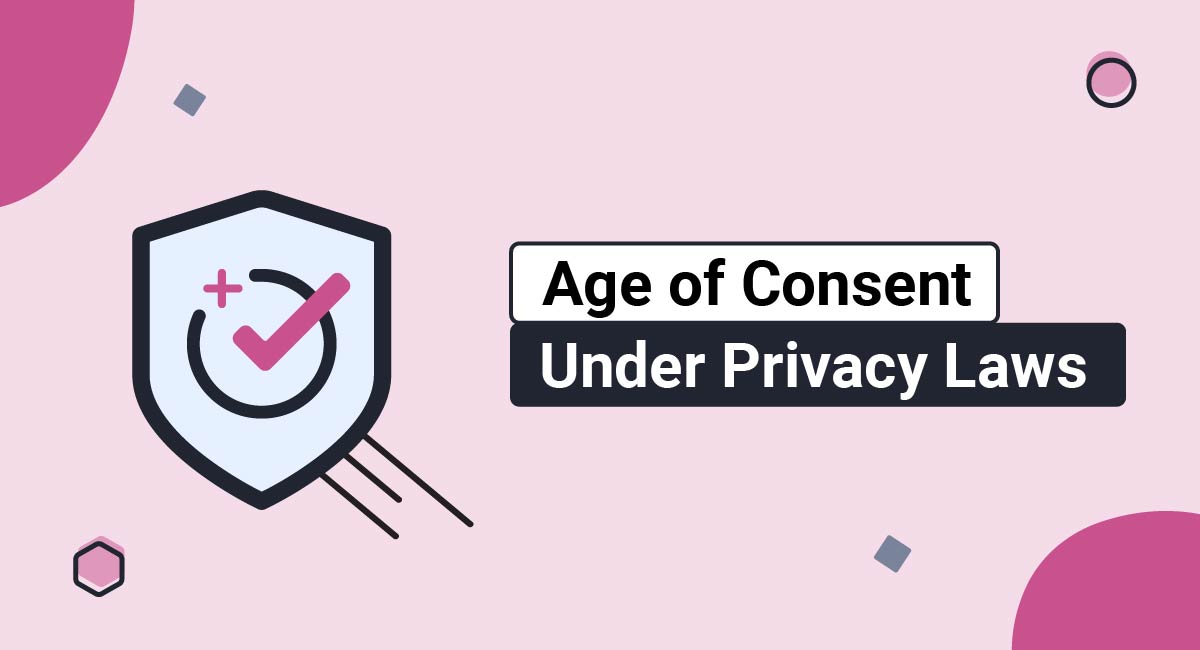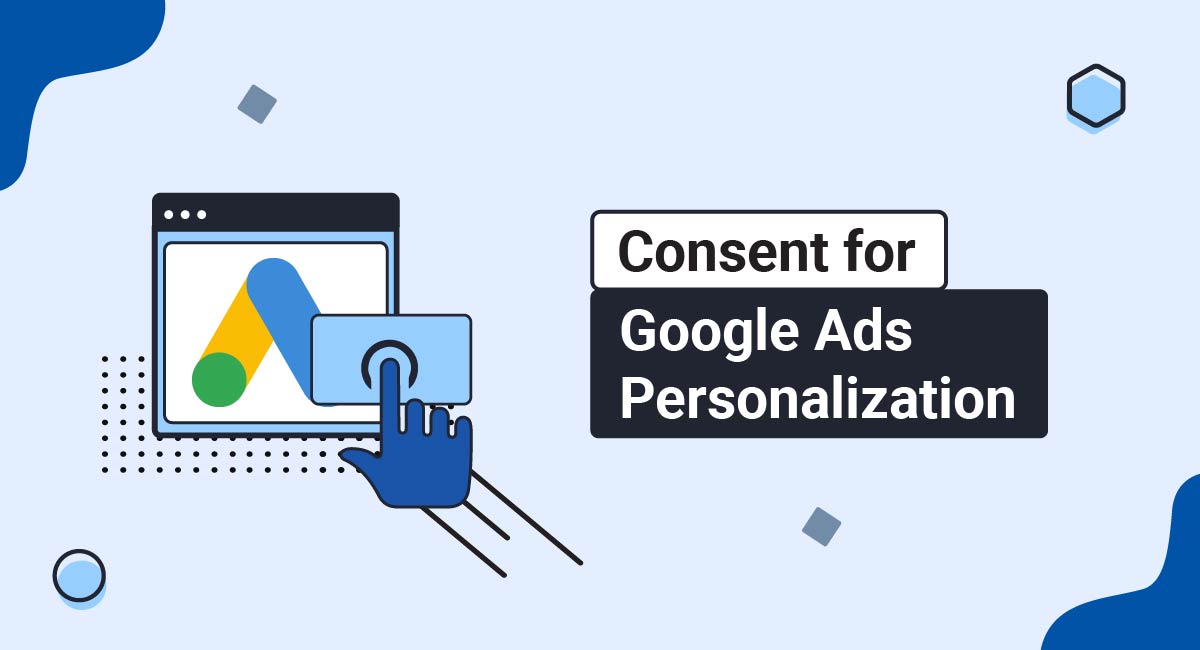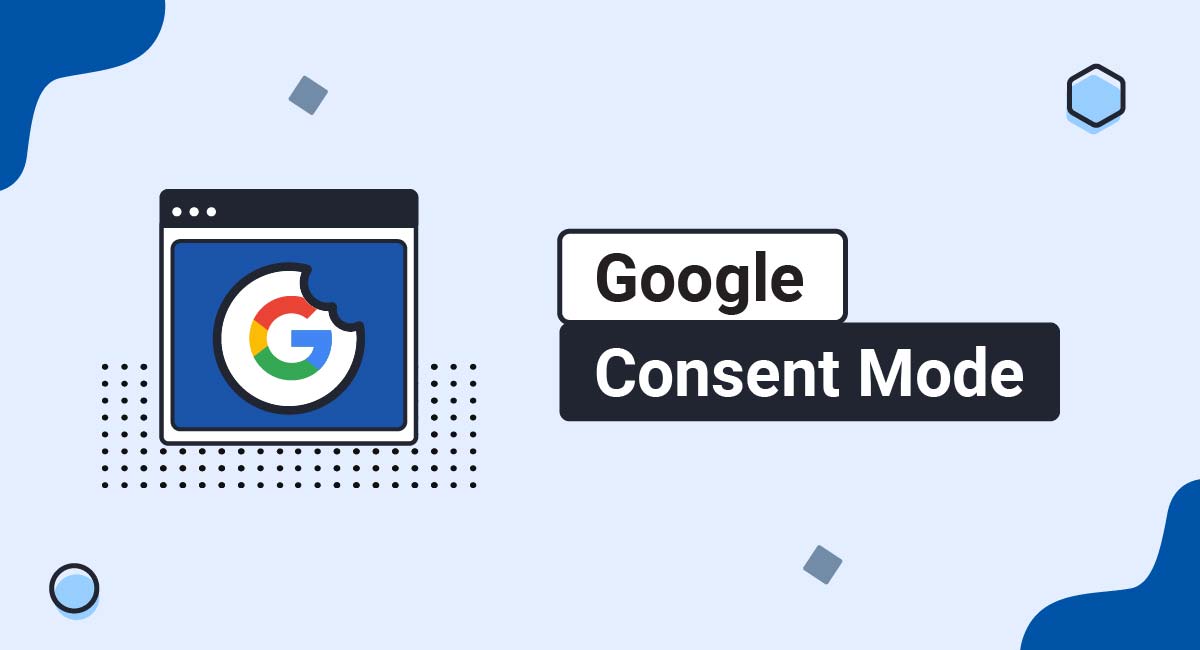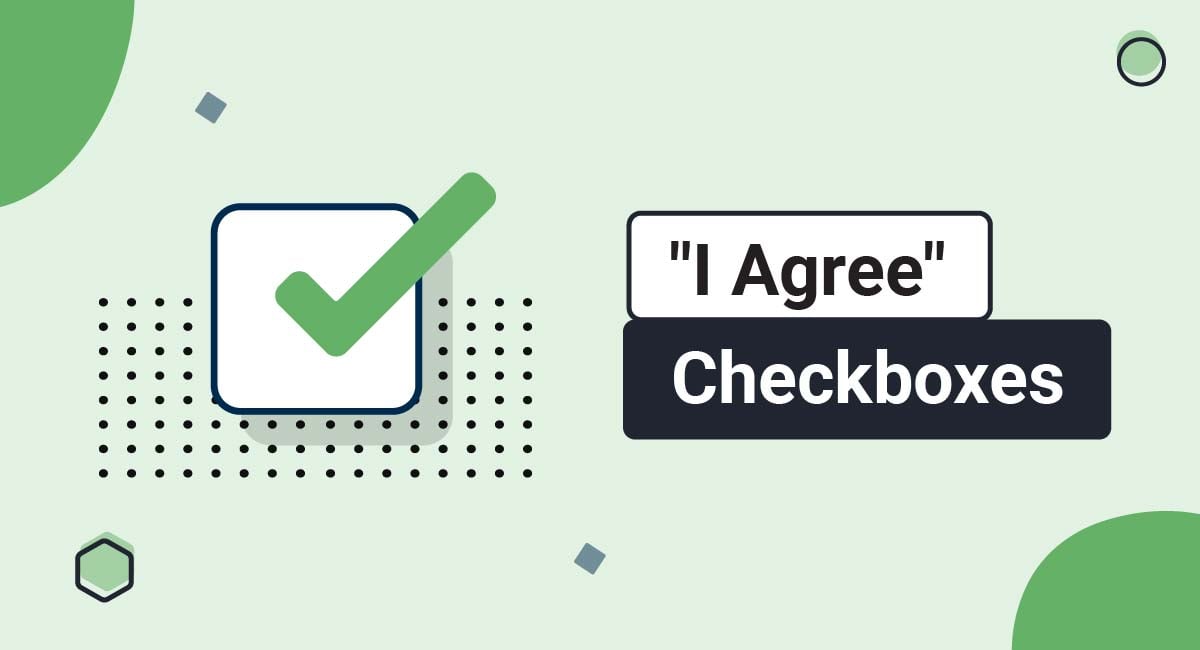Under privacy laws, the age of consent is the minimum age at which a person can legally consent to a data processing activity.
From this age and above, kids can (by themselves) permit a company to collect and use their personal information. The age of consent varies from law to law, but it generally hovers between 13 and 18 years old.
This article will break down the ages of consent under modern privacy laws to help inform your compliance efforts. We'll also go over the requirements that come with catering to minors below the age of consent.
Our Privacy Policy Generator makes it easy to create a Privacy Policy for your business. Just follow these steps:
-
At Step 1, select the Website option or App option or both.

-
Answer some questions about your website or app.

-
Answer some questions about your business.

-
Enter the email address where you'd like the Privacy Policy delivered and click "Generate."

You'll be able to instantly access and download your new Privacy Policy.
- 1. What Does 'Age of Consent' Mean?
- 2. What is the 'Age of Consent' Under Privacy Laws?
- 3. Why Does 'Age of Consent' Matter Under Privacy Laws?
- 4. What are the Ages of Consent Under Major Privacy Laws?
- 4.1. Age of Consent Under the EU's General Data Protection Regulation (GDPR)
- 4.2. Age of Consent Under the Children's Online Privacy Protection Act (COPPA)
- 4.3. Age of Consent Under the California Consumer Privacy Act (CCPA/CPRA)
- 4.4. Age of Consent Under the Virginia Consumer Data Protection Act (VCDPA)
- 4.5. Age of Consent Under the Colorado Privacy Act (CPA)
- 4.6. Age of Consent Under Brazil's Lei Geral de Proteção de Dados (LGPD)
- 4.7. Age of Consent Under Canada's Personal Information Protection and Electronic Documents Act (PIPEDA)
- 4.8. Age of Consent Under China's Personal Information Protection Law (PIPL)
- 4.9. Other Notable Privacy Laws
- 5. Age of Consent By Region and Country: A Comprehensive Breakdown
- 6. What are the Best Practices for Compliance with 'Age of Consent' Requirements?
- 6.1. Set up Age Verification Systems
- 6.2. Provide Child-Related Privacy Disclosures
- 6.3. Get Active, Opt-In Consent When Necessary
- 6.4. Observe Privacy by Design Principles
- 7. What are the Penalties for Non-Compliance with Age of Consent Requirements?
- 8. Summary
What Does 'Age of Consent' Mean?
The 'age of consent' is the legal age at which a person is considered mature enough to make independent decisions about specific activities. This age is one of several legally significant ages alongside:
- The age of majority (typically 18)
- The voting age (typically 17 to 18)
- The legal drinking age (typically 21)
- The legal driving age (typically 16 to 18)
The age of consent varies depending on different contexts. It's mostly often associated with engaging in sexual activity and approving medical treatment.
What is the 'Age of Consent' Under Privacy Laws?
The age of consent takes on a new significance in data privacy. It's the legal age at which a person can independently give permission for the collection or processing of their personal information.
As a business owner, the age of consent spells out the minimum age you can legally ask minors for their consent to a data processing activity. While this age varies across privacy laws and jurisdictions, it generally hovers between 13 and 18 years.
Catering to minors below the age of consent isn't inherently unlawful. It simply means you'll need to fulfill additional obligations, the most important of which is obtaining verifiable consent from the parent(s) or legal guardian(s).
Why Does 'Age of Consent' Matter Under Privacy Laws?
Privacy laws recognize that minors are less aware of the risks and consequences involved in sharing their information online. They're also more vulnerable to deceptive business practices (like dark patterns) that adults would likely recognize and avoid.
Imagine leaving a five-year-old unsupervised in a candy store. Chances are they go on a sugar binge with little understanding of the consequences. The same logic applies when it comes to kids and their data online.
For this reason, children are given special consideration through the 'age of consent' rules. Without this, companies may be tempted to trick kids into "consenting" to certain activities through confusing legal agreements.
Thanks to the age of consent, this would be a violation of child privacy laws with significant penalties attached, including but not limited to lawsuits, fines, and damaged credibility.
What are the Ages of Consent Under Major Privacy Laws?
The age of consent varies across privacy laws, so it's important to learn the rules in the region where your business operates. You should also consider consulting a legal expert, especially for locations with ambiguous rules.
Without further ado, let's see the varying ages of consent under major privacy laws worldwide.
Age of Consent Under the EU's General Data Protection Regulation (GDPR)
Under the EU's General Data Protection Regulation (GDPR), "the default age of consent is 16 years old. That said, the law allows EU member states to lower this threshold to as young as 13 years old if they choose.
If you're catering to anyone below the GDPR's age of consent, you must obtain verifiable parental consent before you can collect or use their personal data:
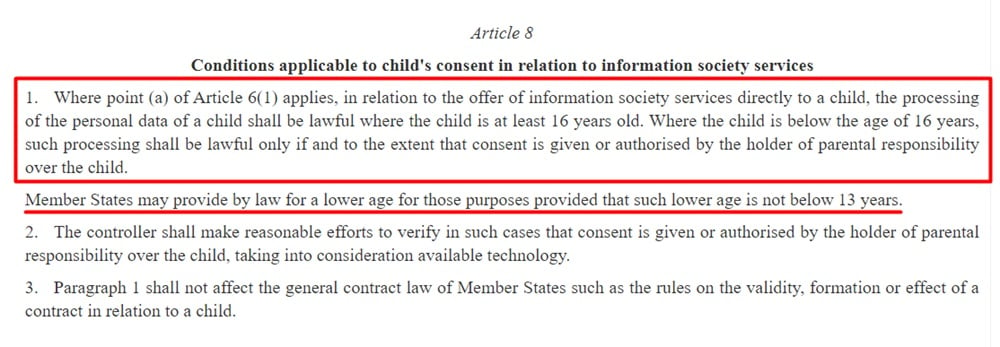
Age of Consent Under the Children's Online Privacy Protection Act (COPPA)
In the United States, the Children's Online Privacy Protection Act (COPPA) sets the age of consent at 13. This federal law applies if your website or online service collects personal information from children under 13, even if your primary audience is adults:
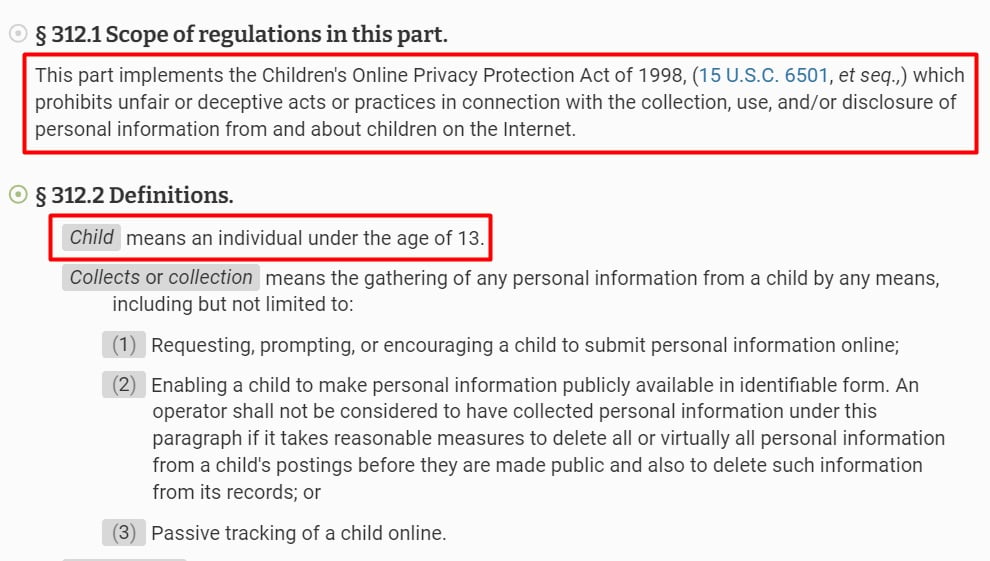
To comply with COPPA, you must provide clear privacy disclosures, obtain verifiable parental consent, and give parents control over their child's information, among other requirements:
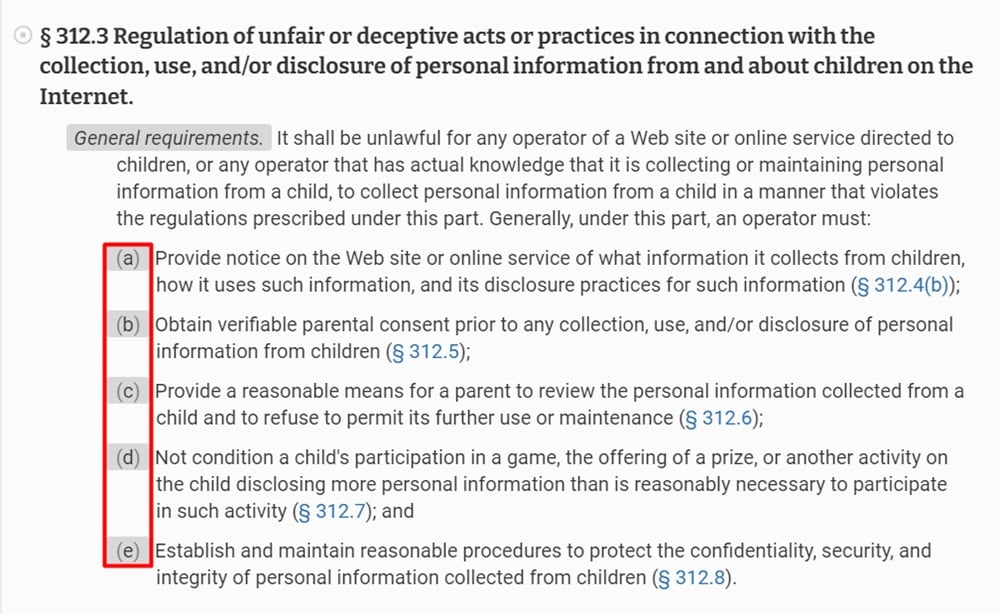
Importantly, COPPA supersedes more permissive state-level laws where children under 13 are involved. So even if your business is based in a state with a lower age threshold, you still need to adhere to the federal standard.
Age of Consent Under the California Consumer Privacy Act (CCPA/CPRA)
When it comes to the sale or sharing of personal information, the California Consumer Privacy Act (CCPA) and its CPRA amendments set the age of consent at 13 to 16 years old.
In practice, you must obtain affirmative (opt-in) consent from children between 13 and 16 years old before you can sell or share their personal information. For children under 13, you must obtain verifiable parental consent before selling or sharing their personal information.
Here's how the CCPA (CPRA) legal text presents this:

Age of Consent Under the Virginia Consumer Data Protection Act (VCDPA)
Following COPPA's footsteps, the Virginia Consumer Data Protection Act (VCDPA) sets the age of consent at 13:

For children below the age of consent, the VCDPA essentially leaves all parental consent requirements in the capable hands of COPPA:

Age of Consent Under the Colorado Privacy Act (CPA)
The Colorado Privacy Act (CPA) maintains the U.S. status quo set by COPPA when it comes to the age of consent. It places the age of consent at 13 years old:
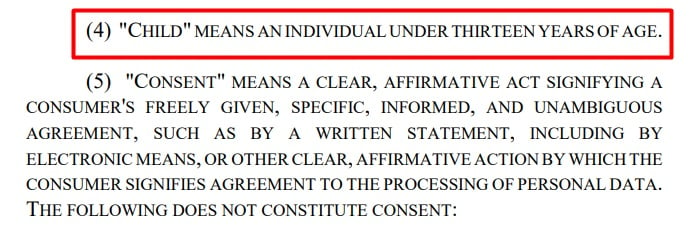
Like Virginia's law, the CPA also states that complying with COPPA's parental consent requirements will keep applicable businesses compliant with its parental consent requirements.
Age of Consent Under Brazil's Lei Geral de Proteção de Dados (LGPD)
Unlike other major privacy laws, Brazil's Lei Geral de Proteção de Dados (LGPD) aligns its age of consent with its age of majority at 18 years old.
Below this age, you'll need to get consent from at least one parent or legal guardian before collecting, using, or sharing children's personal information. What's more, all data processing involving minors must be "carried out in their best interest."
The sole exception when a minor's personal information can be used (once) without consent is when it is necessary to contact the parent or legal guardian:
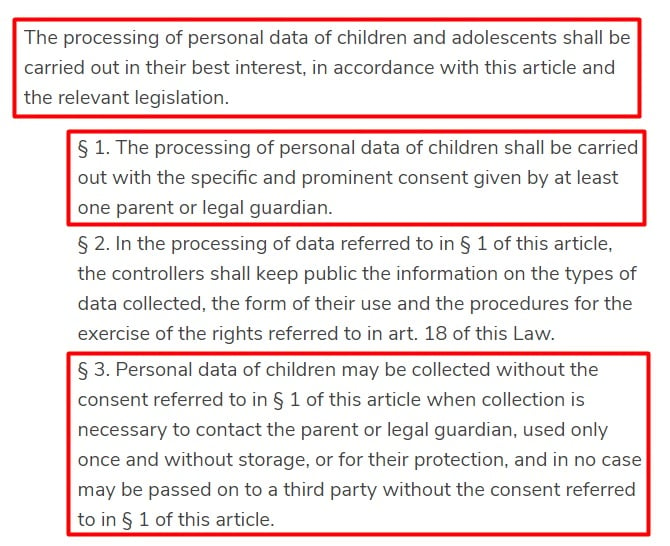
Age of Consent Under Canada's Personal Information Protection and Electronic Documents Act (PIPEDA)
Canada's Personal Information Protection and Electronic Documents Act (PIPEDA) doesn't specify a minimum age of consent in its provisions.
That said, various guidance and recommendations, including a suggestion from the Privacy Commissioner of Canada, indicate that getting consent from a child under 13 would be invalid.
Age of Consent Under China's Personal Information Protection Law (PIPL)
China's Personal Information Protection Law (PIPL) sets the age of consent at 14 years old. To legally handle the data of minors under 14, you'll need to obtain consent from their parents or other legal guardians.
The PIPL also imposes additional restrictions around the handling of children's personal data, including the need to formulate "specialized personal information handling rules":
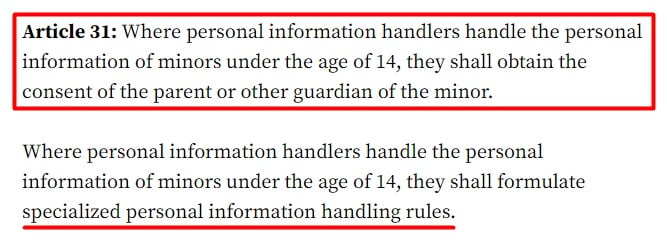
Other Notable Privacy Laws
The laws above represent some of the most prominent data privacy regulations in force today. That said, there are many other legal jurisdictions with their own age of consent requirements. A few of them are as follows:
- India's Digital Personal Data Protection Act (DPDP): 18 years old
- Singapore's Personal Data Protection Act 2012 (PDPA): 13 years old
- South Africa's Protection of Personal Information (POPI) Act: 18 years old
Age of Consent By Region and Country: A Comprehensive Breakdown
| Region/Jurisdiction | Country | Age of Consent for the Processing of Personal Information |
|---|---|---|
| The European Union (EU) and European Economic Area (EEA) | Austria | 14 |
| Belgium | 13 | |
| Bulgaria | 14 | |
| Croatia | 16 | |
| Czech Republic | 15 | |
| Denmark | 15 | |
| Estonia | 13 | |
| Finland |
15 for "ordinary matters" 13 for Information Society Services |
|
| France | 15 | |
| Germany | 16 | |
| Hungary | 16 | |
| Ireland | 16 | |
| Italy | 14 | |
| Latvia | 13 | |
| Malta |
16 in the education sector 13 for Information Society Services |
|
| The Netherlands | 16 | |
| Poland | 16 | |
| Portugal | 13 | |
| Cyprus | 14 | |
| Slovakia | 16 | |
| Slovenia | 15 | |
| Spain | 14 | |
| Sweden | 13 | |
| Iceland | 13 | |
| Liechtenstein | 16 | |
| Norway | 13 | |
| The United Kingdom | England | No set age |
| Scotland | 12 | |
| Wales | No set age | |
| Northern Ireland | No set age | |
| The United Kingdom (DPA 2018) | 13 | |
| North America | The United States | 13 |
| Canada | 14 | |
| Mexico | 18 | |
| South America | Argentina | 18 |
| Brazil | 18 | |
| Peru | 14 | |
| Chile | 14 (16 for sensitive data) | |
| Columbia | 18 | |
| Asia-Pacific (APAC) | China | 14 |
| Hong Kong | 18 | |
| Australia | 18 | |
| Singapore | 13 | |
| India | 18 | |
| Indonesia | 18 | |
| Japan | 15 (assessed on a case-by-case basis) | |
| Africa | South Africa | 18 |
| Nigeria | 18 | |
| Egypt | 18 |
What are the Best Practices for Compliance with 'Age of Consent' Requirements?
Learning the age of consent in your legal jurisdiction is the first step. The next is complying with all child-related requirements imposed by the privacy laws that apply to your business.
The requirements of each law will be different, so it's important to pay keen attention to the specifics. That said, we've compiled a list of best practices to get you started.
Set up Age Verification Systems
To comply with the age of consent requirements, you must first accurately identify users' ages. This way, you can take appropriate action depending on whether or not users are below the age of consent.
Here's an example of an age verification system that uses self-declaration from BBC:
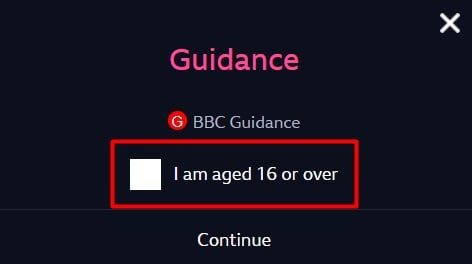
And here's a similar age verification pop-up from BeerCraft that checks whether users are above the legal drinking age:
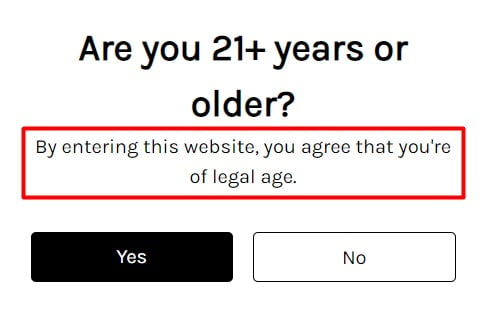
When minors are involved, it's advisable to use a higher-security age verification method than asking users to indicate their age. After all, kids are likely to make this up if doing so will grant them access to your content or service.
Other effective age-verification methods include but aren't limited to:
- Integrating a third-party age-checking software on your platform
- Asking users to upload a government-issued ID (e.g., a driver's license)
- Using AI-powered facial recognition technology (such as taking a selfie)
Keep in mind that any age verification method you have in place should be frictionless and preserve user privacy.
Provide Child-Related Privacy Disclosures
Under privacy laws, you must provide crystal clear information about your data practices in legal agreements like your Privacy Policy and Terms and Conditions.
If you cater to children or collect their data, it's especially important that you address children's use of your services in your Privacy Policy by explaining the following:
- What personal information you collect from children
- How you will use this information
- Whether or not you will share children's information with third parties and why
- What rights or controls children and their parents have over their information
- How you will obtain parental consent for children below the age of consent
Here's how The Walt Disney Company's sets out its practices when it comes to children's privacy:
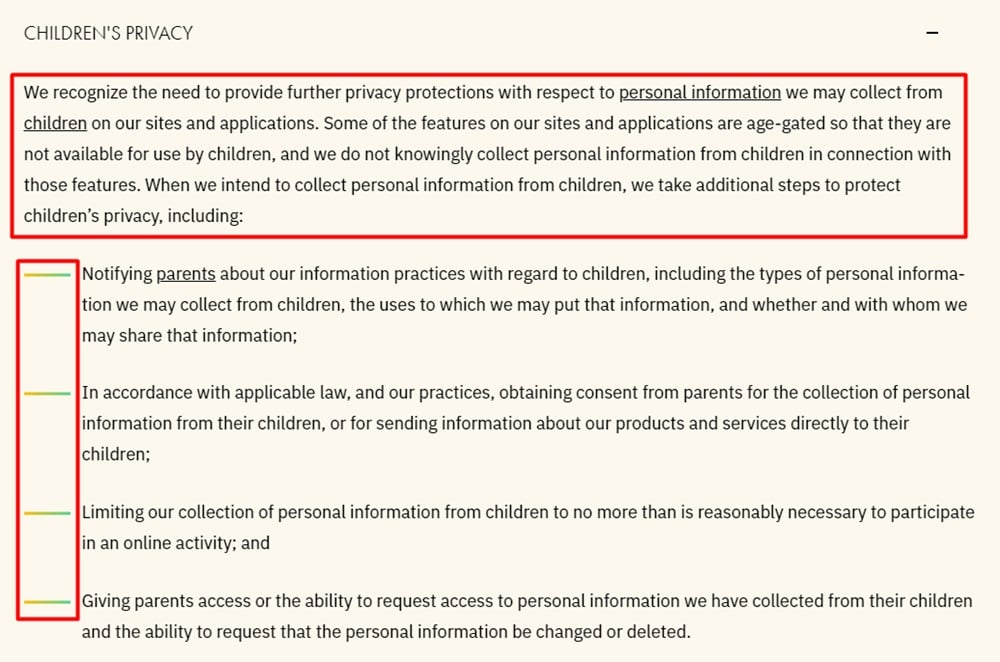
In your Terms and Conditions, you can address children's use of your service with an Age Limitation Clause.
Here's an example of this, from Play2Pay:

Importantly, your Privacy Policy (and other relevant legal documents) must be age-appropriate with simple language and without any legal or technical jargon.
LEGO does a great job of this in its Privacy Policy:
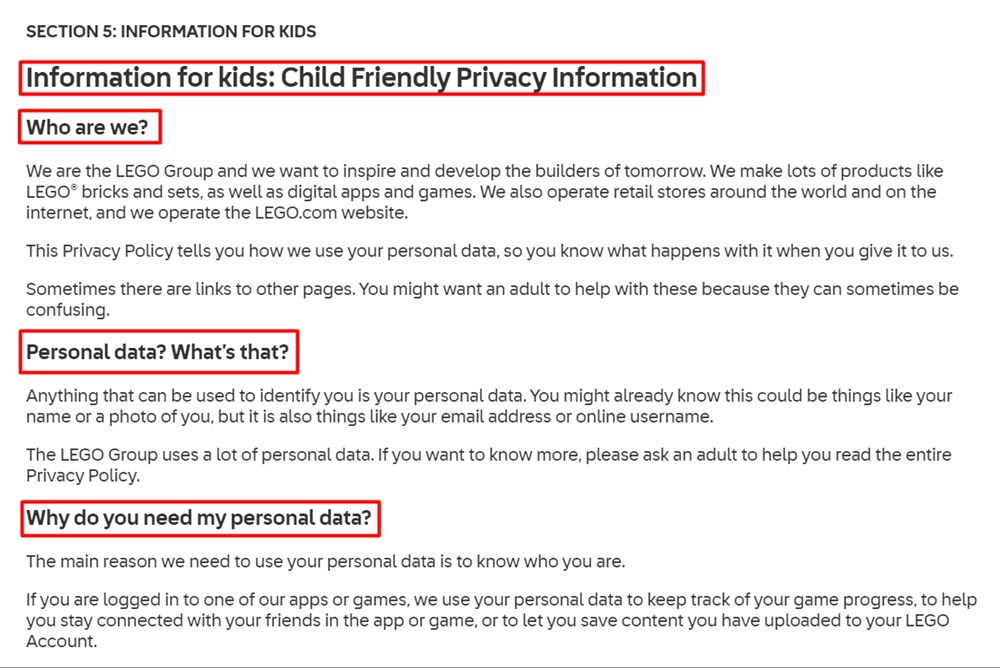
Even if you don't actively cater to children, it's a good idea to disclose this in your Privacy Policy like Amazon does here:

Letting users know that your service isn't available to children helps limit liability in the event that some kids bypass your age-verification systems.
Get Active, Opt-In Consent When Necessary
Where required by law, you'll need to obtain clear, active consent before collecting, using, or sharing a minor's personal information.
Suppose you run an educational app targeted at children of all ages. Depending on the age of consent in your legal jurisdiction, you must either:
- Obtain consent from minors directly (if they're at or above the age of consent)
- Obtain consent from the parents or legal guardians (if minors are below the age of consent)
Here's an example of what clear, active consent looks like from PayPal:
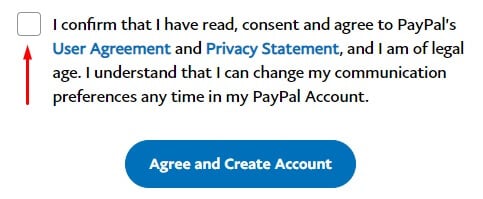
To provide their consent, users would have to tick the empty checkbox above.
It's also important to keep detailed records of consent, including timestamps, IP addresses, and other metadata. This documentation could prove invaluable if you ever need to demonstrate compliance.
Observe Privacy by Design Principles
Privacy by Design (PbD) involves building privacy safeguards into your products and services from the ground up. Since the arrival of the GDPR, Privacy by Design has quickly become a data protection best practice.
When it comes to children's personal information, a few Privacy by Design best principles to observe include:
- Age gating: Restrict access to certain features or content based on the user's age.
- Transparency: Provide detailed information about your data processing practices using simple, easy-to-understand language.
- Data minimization: Collect and keep only the personal information you truly need.
- User-centric experiences: Provide age-appropriate experiences and privacy controls for minors from the onset.
What are the Penalties for Non-Compliance with Age of Consent Requirements?
Regulators take children's privacy seriously. As a result, violations often attract the harshest penalties. A few examples of the maximum fines under major privacy laws are as follows:
- The EU's GDPR imposes fines of up to €20 million or 4% of a company's global annual revenue, whichever is higher.
- COPPA in the United States allows for civil penalties of up to $50,120 per violation.
- California's CCPA (CPRA) imposes fines of up to $7,500 for each intentional violation.
- Brazil's LGPD sets out fines of up to 2% of a company's revenue, capped at 50 million Brazilian reais.
- China's PIPL imposes fines of up to RMB 50 million or 5% of a company's annual revenue for severe violations.
But fines are only one part of the potential penalties. Privacy violations involving children can also trigger lawsuits, reputational damage, and enforcement actions that disrupt business operations.
Summary
Privacy laws are extra protective of children's data, and rightly so. The age of consent clarifies when minors are old enough to legally make decisions about their personal information - generally 13 to 18 years old.
The rules vary from law to law, but the intention is clear: protect minors and their data. Missteps in this area of law, whether intentional or accidental, can be costly for businesses.
Fortunately, once you've mapped out applicable laws and learned the relevant ages of consent for your region(s), the rest is pretty straightforward.
To recap, compliance with the age of consent rules means observing the following:
- Set up age verification systems
- Provide child-related privacy disclosures
- Get active, verifiable consent when necessary
- Implement child-related Privacy by Design (PbD) practices

Comprehensive compliance starts with a Privacy Policy.
Comply with the law with our agreements, policies, and consent banners. Everything is included.
